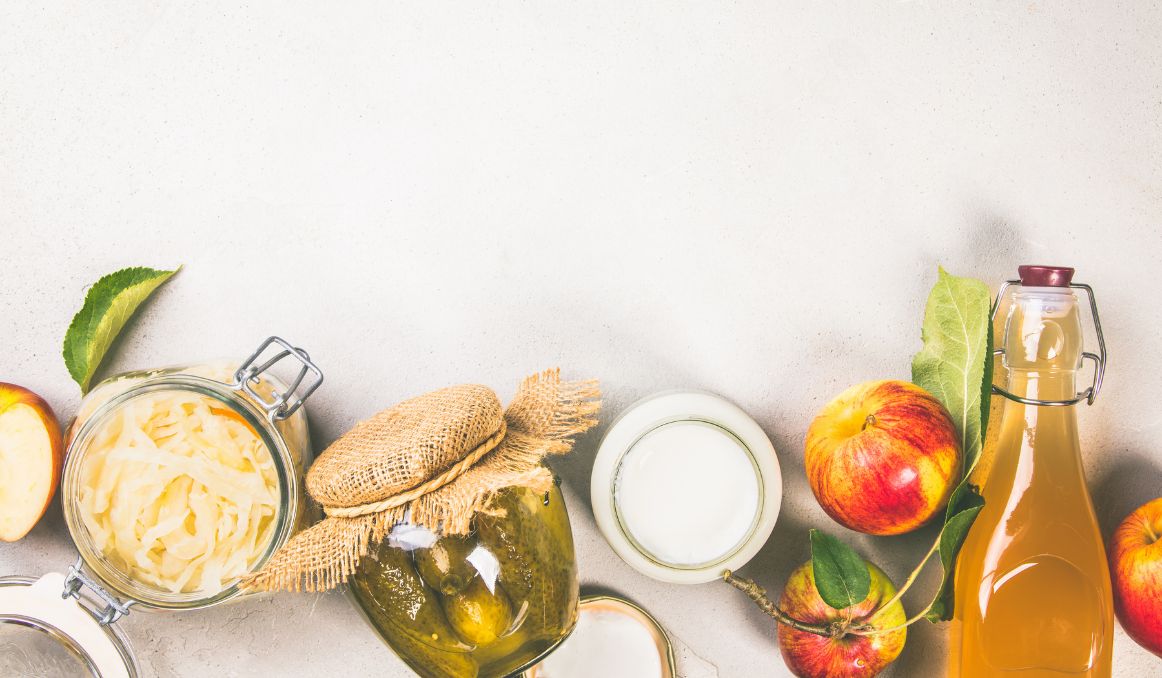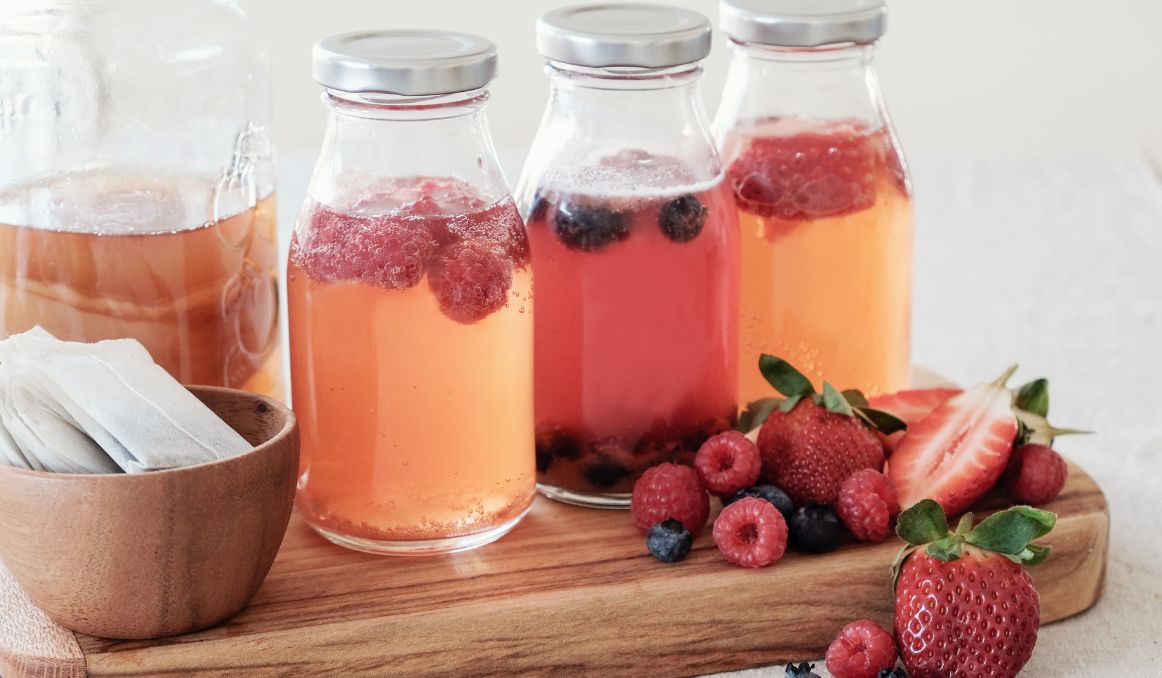What Kind of Fermentation Occurs in Yeast-Fermented Foods?
If you haven’t heard about how great yeast-fermented foods are for the human body, you must have been living under a rock. Kombucha is now on every market shelf, kimchi is available widely, and virtually every human during the global lockdown had their own sourdough starter kit on hand.
Yeast-fermented foods have been around, and are a staple, of pretty much every civilization since the beginning of… well… civilization.
Why?
What kind of fermentation occurs in yeast-fermented foods, and why is it so good for you?

Yeast
Yeast is a single-cell organism that has been around since the beginning of time, as it is a type of fungus, and fungi are the first known living organisms on earth.
It provides myriad benefits to the human body, just like other fungi. In particular, yeast is good for your digestive system, keeping it healthy and in good balance. It also promotes a strong immune system, helping your gut absorb vitamins and nutrients and fighting disease.
Yeast needs food, warmth, and moisture to do its job, which is, essentially, to convert sugar and starch into carbon dioxide, alcohol, and acids. That process is what we call fermentation.
In beer, wine, and other alcoholic beverages, we need yeast to make the alcohol.
In bread and other foods, we need yeast for rising and expanding.
The alcohol preserves food and beverages, so originally, the fermentation process was undergone for that purpose alone, without any knowledge as to the true health benefits of fermentation.
Fermentation Health Benefits
When added to food, yeast produces acids and alcohols that preserve the food and convert it to an even healthier version of its original state.
Fermented foods and drinks undergo a microbial growth and enzymatic process that produces new compounds in foods.
The end result of fermented foods will be a slightly sour flavor.
Two kinds of fermentation exist.
Spontaneous Fermentation
Spontaneous fermentation is what has occurred throughout history with fermented foods and drinks. The cook, baker, or brewer, combines the ingredients and then leaves the combination up to nature. At that point, whatever yeast or bacteria happen to be present in the air will ferment the foods.
Natural Fermentation
Natural fermentation occurs when a person adds yeast intentionally to the food or drink. An example of this process would be kimchi, sauerkraut, beer, wine. What was once spontaneous can now be manipulated and controlled by adding yeast or bacteria and then creating a controlled environment wherein no further yeast or bacteria can enter the mix.
Either of these processes is perfectly acceptable, but for commercial cooks, bakers, or brewers who are seeking a consistent product, and a following that expects that product, natural fermentation is preferred.
If you’re at home, if you’re experimenting in your kitchen, be it commercial or domestic, it can be interesting to see what happens with spontaneous fermentation and then control for which factors you can to then produce a consistent product.
What Type of Fermentation Occurs?
In yeast-fermented foods, with or without oxygen, yeast breaks down the sugars and starches into alcohols and acids, making foods abundantly more nutritious and preserving them so you can store them for longer periods of time without worrying about spoiling.
In drinks, yeast and bacteria convert starches or sugars into lactic acid, and this process does not require heat.
Benefits of Fermented Foods

There are several health benefits to eating fermented foods and drinking fermented beverages.
Enzymes
Fermented foods provide enzymes necessary for digestion. These enzymes are critical to the human body, but as we age, our bodies do not produce them well. Eating more fermented foods means we will be able to break down our food more efficiently and avoid gut and digestive problems that can lead to long term illness.
Pre-Digestion
During the fermentation process, the microbes feed on sugars and starches, breaking our food down long before we even eat it. Thanks, fermentation!
Probiotics
Probiotics that are produced during fermentation will aid in gut health. They are the good bacteria in your gut that keep your entire body healthy. Probiotics create an environment in your gut that is anti-tumor, anti-cancer, anti-viral, and anti-fungal. Yes to probiotics!
Neutralization
Fermentation neutralizes anti-nutrients that you may ingest in some foods like nuts, grains, seeds, and legumes. This is why a balanced diet is so critical.
Vitamins and Minerals
Not only will fermented foods help your body absorb vitamins and minerals better, they will actually increase them in your body! Fermentation increases B and C vitamins and enhances folic acid, riboflavin, niacin, thiamin, and biotin.
Stages of Fermentation
It takes weeks to ferment foods to produce the full health benefits we look for in our favorite fermented foods, and this process is undergone in stages.
Primary fermentation is the beginning stage, during which yeast and bacteria get to work breaking down the raw ingredients such as fruit, vegetables, or dairy.
Secondary fermentation is the weeks long process during which alcohol levels rise and the yeast and bacteria die off as the sugars and starches become less available.
For your own fermentation, it will be up to you to decide how long you want your fermentation process to take place as the longer food and drink ferment, the higher the alcohol volume as yeast continues to convert sugar and starch to alcohol.
You can halt or stall fermentation at any time, and you can test your ABV with the proper equipment.
Like with anything, this process can be fun if you allow yourself room to experiment and grow through it.
Yeast is highly nutritious every step of the way, and you are in no real danger of stopping fermentation too early or too late.
You might want to be sure you check your ABV before serving kombucha to your family that may make them tipsy though!
Cheers!
Passionate about yeast fermentation and all the wonders it can do? So are we! If you’re interested in finding out how you can use our technology to control fermentation and monitor your yeast, save work hours and improve the cost-efficiency of your business, drop us a line at [email protected]
Also, check out these product pages, if you’re into beer or wine making:
- Oculyze BB 2.0 (Better Brewing) Yeast Cell Counter App + Hardware
- Oculyze FW (Fermentation Wine) Yeast Cell Counter App + Hardware
…or our custom solution page for other use cases (yours included):
Sources:


